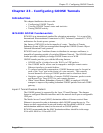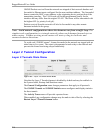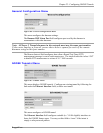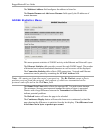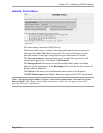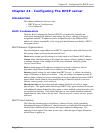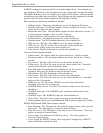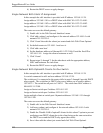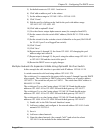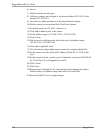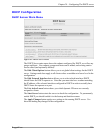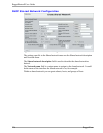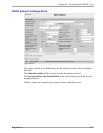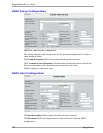
Chapter 24 - Configuring The DHCP server
• Lease end for BOOTP clients: Cut off date for all BOOTP client leases.
• Dynamic DNS enabled: Should DNS information be updated on the DNS
server when a client receives an IP address.
• Dynamic DNS domain name: The domain name to update dynamic DNS
information in.
• Dynamic DNS hostname: Use the specified hostname for clients, or use
the hostname supplied by the client.
• Dynamic DNS reverse domain: The reverser DNS domain to update
dynamic information in for the reverse DNS entry.
• Dynamic DNS reverse domain: The reverser DNS domain to update dynamic
information in for the reverse DNS entry.
Lesser used DHCP server configurations include
• Allow unknown clients: Should DHCP accept requests from clients it has
never seen before or only from clients that have already received leases in
the past.
• Server is authoritative: If the server is authoritative, it will send deny
messages to any client which tries to renew a lease which the server knows
the client shouldn't have.
• Option 82 Support.
Option 82 Support with Disable NAK
If DHCP relay clients (option 82 clients) are used on the same subnet as the DHCP
server, some clients will immediately try to renew a lease right after receiving it by
requesting a renewal directly from the DHCP server. Since the DHCP server is only
configured to provide that lease through a relay agent with the right option 82 fields
added, the server will send the client a NAK to disallow use of the lease. Enabling
this option disables this reject message, so that the renewal request that the DHCP
relay agent sends a moment later (which the DHCP server accepts since it has the
right option 82 fields added) will be the only message for which the client receives a
reply. If the DHCP server and clients are not on the same subnet, this option is not
required. The meaning of the value of many fields depends on the client's
interpretation of the field, so the actual meaning of a field is determined by the client.
See the documentation of the client to determine what values are required by the client
for special options.
Example DHCP Scenarios And Configurations
Single Network With Dynamic IP Assignment
In this example the eth1 interface is provided with IP address 192.168.1.1/24 while
addresses 192.168.1.101 through 192.168.1.200 are assigned to the clients. The
router serves as the default gateway.
1) Enable eth1 in the 'Edit Network Interfaces' menu.
2) Click 'add a subnet', and configure it for network address 192.168.1.0 with
netmask 255.255.255.0.
3) Set the assigned address range to 192.168.1.101 - 192.168.1.200.
4) Click 'Create' then edit the subnet just created and click 'Edit Client Options'.
5) Set default routers to 192.168.1.1 and save.
RuggedCom 221



